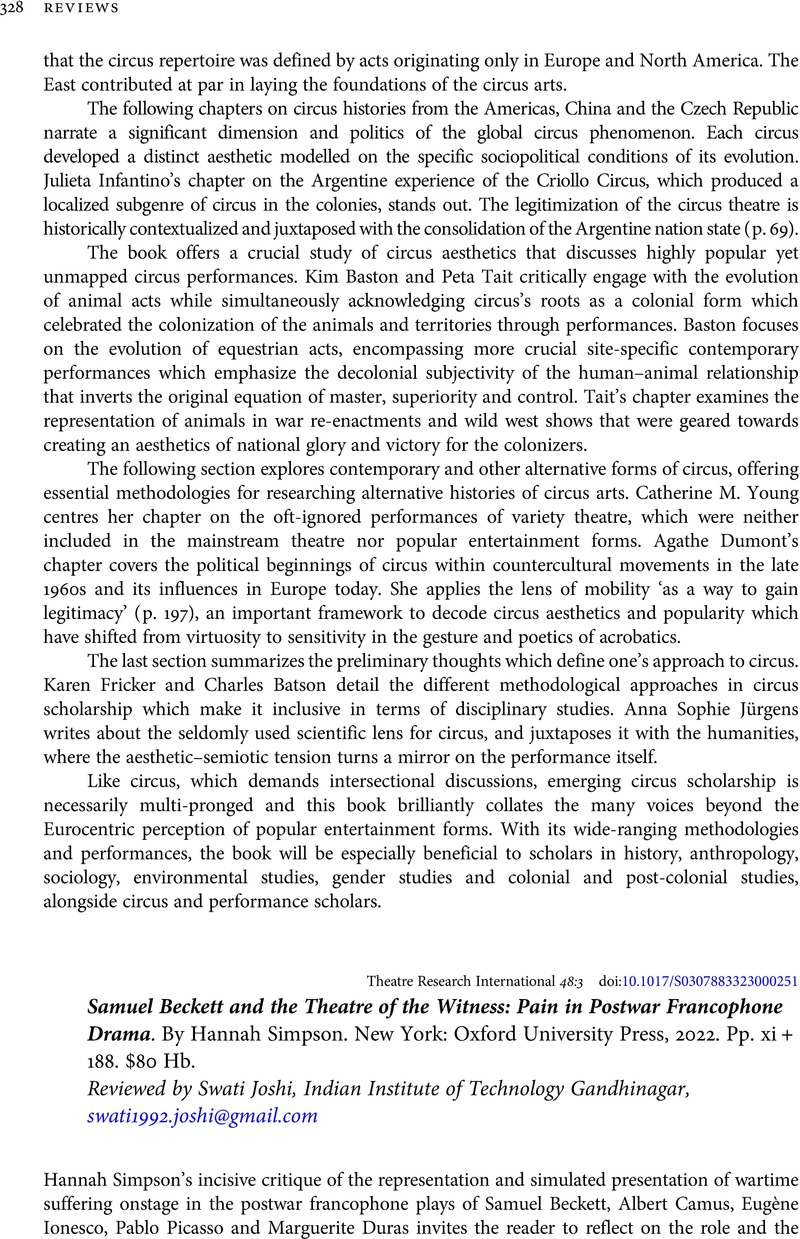No CrossRef data available.
Article contents
Samuel Beckett and the Theatre of the Witness: Pain in Postwar Francophone Drama. By Hannah Simpson. New York: Oxford University Press, 2022. Pp. xi + 188. $80 Hb.
Review products
Samuel Beckett and the Theatre of the Witness: Pain in Postwar Francophone Drama. By Hannah Simpson. New York: Oxford University Press, 2022. Pp. xi + 188. $80 Hb.
Published online by Cambridge University Press: 09 November 2023
Abstract
An abstract is not available for this content so a preview has been provided. Please use the Get access link above for information on how to access this content.

- Type
- Book Review
- Information
- Copyright
- Copyright © International Federation for Theatre Research 2023


